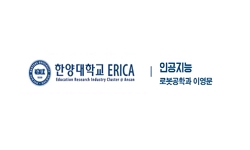The main purpose of this study was to estimate a new regression model to explain the relationship between urban forest and air temperature in summer, 2001. This study consists of two parts: correlation coefficient analysis and regression analysis. Acc...
http://chineseinput.net/에서 pinyin(병음)방식으로 중국어를 변환할 수 있습니다.
변환된 중국어를 복사하여 사용하시면 됩니다.
- 中文 을 입력하시려면 zhongwen을 입력하시고 space를누르시면됩니다.
- 北京 을 입력하시려면 beijing을 입력하시고 space를 누르시면 됩니다.

도시림의 여름 대기온도 저감효과 - 서울시를 대상으로 - = The Effects of Urban Forest on Summer Air Temperature in Seoul, Korea
한글로보기https://www.riss.kr/link?id=A101267242
- 저자
- 발행기관
- 학술지명
- 권호사항
-
발행연도
2002
-
작성언어
Korean
- 주제어
-
등재정보
KCI등재
-
자료형태
학술저널
- 발행기관 URL
-
수록면
28-36(9쪽)
-
KCI 피인용횟수
9
- 제공처
- 소장기관
-
0
상세조회 -
0
다운로드
부가정보
다국어 초록 (Multilingual Abstract)
The main purpose of this study was to estimate a new regression model to explain the relationship between urban forest and air temperature in summer, 2001. This study consists of two parts: correlation coefficient analysis and regression analysis. According to correlation coefficient analysis, thermal infra-red radiations of the major land use categories found significant difference in each category. However there were no significant relationship between the data (thermal infra-red radiation and NDVI) derived from Landsat-7 ETM+ image and air temperature at Automatic Weather Stations(AWSs). After estimating various regression models for summer air temperature, the final models were chosen. The final regression models consisted of two variables such as forest m and traffic facilities area. The regression models explained over 78% of the variability in air temperatures. The regression models with variables of forest area and traffic facilities area showed that the coefficient of the first variable was even more significant than the second one. However, the negative impact of the traffic facilities area was slightly greater than the positive impact of the forest area. Consequently, the effects of forest area and traffic facilities area were apparent to explain summer air temperature in Seoul. Therefore two policies have the most important implications to mitigate the summer air temperature in Seoul: to expand and to conserve the urban forest; and to change the Oafnc facilities'characteristics. The results from this study are expected to be useful not merely in informing the public that urban forest mitigates summer air temperahne, but in urging the necessity of budgets for trees and managing urban forests. It is recommended that field swey of summer air temperature be Performed for the vadidation of the models. The main purpose of this study was to estimate a new regression model to explain the relationship between urban forest and air temperature in summer, 2001. This study consists of two parts: correlation coefficient analysis and regression analysis. According to correlation coefficient analysis, thermal infra-red radiations of the major land use categories found significant difference in each category. However there were no significant relationship between the data (thermal infra-red radiation and NDVI) derived from Landsat-7 ETM+ image and air temperature at Automatic Weather Stations(AWSs). After estimating various regression models for summer air temperature, the final models were chosen. The final regression models consisted of two variables such as forest m and traffic facilities area. The regression models explained over 78% of the variability in air temperatures. The regression models with variables of forest area and traffic facilities area showed that the coefficient of the first variable was even more significant than the second one. However, the negative impact of the traffic facilities area was slightly greater than the positive impact of the forest area. Consequently, the effects of forest area and traffic facilities area were apparent to explain summer air temperature in Seoul. Therefore two policies have the most important implications to mitigate the summer air temperature in Seoul: to expand and to conserve the urban forest; and to change the traffic facilities'characteristics. The results from this study are expected to be useful not merely in informing the public that urban forest mitigates summer air temperature, but in urging the necessity of budgets for trees and managing urban forests. It is recommended that field survey of summer air temperature be Performed for the vadidation of the models.
동일학술지(권/호) 다른 논문
-
- 한국조경학회
- 김도경
- 2002
- KCI등재
-
- 한국조경학회
- 김신원
- 2002
- KCI등재
-
- 한국조경학회
- 홍광표
- 2002
- KCI등재
-
대형 수목의 이식공법 - 천안시 팽나무와 안동시 은행나무 사례 -
- 한국조경학회
- 임재홍
- 2002
- KCI등재
분석정보
인용정보 인용지수 설명보기
학술지 이력
| 연월일 | 이력구분 | 이력상세 | 등재구분 |
|---|---|---|---|
| 2020 | 평가예정 | 계속평가 신청대상 (등재유지) | |
| 2015-01-01 | 평가 | 우수등재학술지 선정 (계속평가) | |
| 2011-01-01 | 평가 | 등재학술지 유지 (등재유지) |  |
| 2009-01-01 | 평가 | 등재학술지 유지 (등재유지) |  |
| 2007-01-01 | 평가 | 등재학술지 유지 (등재유지) |  |
| 2005-05-20 | 학술지명변경 | 외국어명 : 미등록 -> Journal of the Korean Institute of Landscape Architecture |  |
| 2005-01-01 | 평가 | 등재학술지 유지 (등재유지) |  |
| 2002-07-01 | 평가 | 등재학술지 선정 (등재후보2차) |  |
| 2000-01-01 | 평가 | 등재후보학술지 선정 (신규평가) |  |
학술지 인용정보
| 기준연도 | WOS-KCI 통합IF(2년) | KCIF(2년) | KCIF(3년) |
|---|---|---|---|
| 2016 | 0.74 | 0.74 | 0.78 |
| KCIF(4년) | KCIF(5년) | 중심성지수(3년) | 즉시성지수 |
| 0.76 | 0.74 | 1.022 | 0.14 |




 ScienceON
ScienceON






